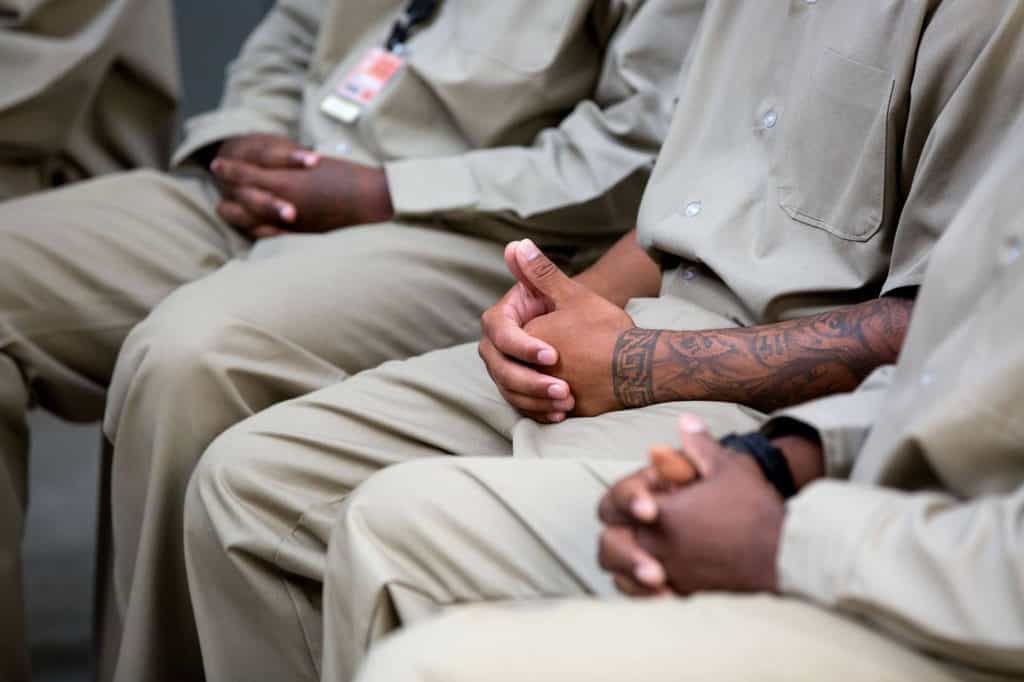Federal Prison Population to Grow Under ‘Law & Order’ President
RT, June 9, 2017

Credit Image: © Pete Souza/The White House/ZUMAPRESS.com
The federal prison population is anticipated to grow by over 4,000 to a total 191,492 inmates, according to details included in a Justice Department budget proposal. As government-run prisons are overcrowded, private prisons could see growth.
The budget proposal doesn’t include the estimated costs of prison growth, but it would reverse the Obama-era plan to phase out of contracts with for-profit prison operations.
The phase out happened after the then Justice Department found private prison more dangerous than government run-facilities.
An allegation private prison owners dispute, and now federal officials say they’ve improved oversight of contract facilities.
About 19 percent of federal inmates are in private prisons or re-entry centers. Industry analysts said the percentage will increase as they have more beds available than federal prisons, which are already running at 14 percent above their official capacity, according to the Federal Bureau of Prisons.
The Wall Street Journal reported share prices for the two biggest prison companies, Geo Group Inc. and CoreCivic, formerly Corrections Corporation of America, have roughly doubled since the election.
Both Geo Group and CoreCivic are spending vast sums of money on lobbying for federal contracts.
In April, Geo Group landed a contract from US Immigration and Customs Enforcement to build and run a $110-million, 1,000-bed detention facility in Texas.
During his election campaign in 2016, and early on in his administration, Trump repeatedly said that he was the bringer of “law and order.”
During his inauguration speech, Trump made a colorful reference to “American carnage” and said there were “crime and the gangs and the drugs that have stolen too many lives and robbed our country of so much unrealized potential.”
He signed three executive orders to fight violent crime by breaking the backs of transnational cartels and their subsidiaries in areas of drug and human trafficking, intellectual property and cybercrime, and violent crime against law enforcement. The latter pursuit would require new legislation defining federal crimes and increased penalties.
In a May 12 memo, Attorney General Jeff Sessions reversed Obama-era guidelines for how to deal with non-violent drug offenders, directing federal prosecutors to charge defendants with the “most serious, readily provable” offense in nearly all cases, according to Mother Jones.
Sessions said in a speech that day that the new guidelines “un-handcuffed” prosecutors in their law enforcement efforts and was “the right and moral thing to do.”
His announcement is likely to have far-reaching implications for how federal prosecutors across the country approach drug offenses during Trump’s administration.
The decision amounts to a reversal in the nation’s approach to criminal justice and drug sentencing reform, which had by driven by bipartisan consensus.
In 2014, the US Sentencing Commission voted unanimously for the reduction in mandatory minimums, reported the Washington Post.
Criminal justice reformers have argued the long, mandatory minimum sentences disproportionately affected minorities and failed to improve public safety.
Last year, the Obama administration released 6,000 inmates convicted of non-violent drug crimes, and Obama was the first president to leave office with a smaller prison population than when he arrived. He also granted clemency to 1,927 individuals, among them Chelsea Manning and Oscar Lopez Rivera.
Sessions claims Obama’s policies were in part responsible for the recent increase in violent crime in some cities.
The Prison Policy Initiative in 2016 estimated that the United States has about 2.3 million people incarcerated, the highest rate in the world. Of that total, 1.3 million are in state prison, 646,000 are in local jails, 34,000 are in youth correctional facilities, and 33,000 are in immigration detention camps.















